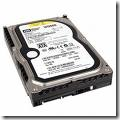
What is a Megabyte (MB) and Gigabyte (GB)?
 Defining how hard drive manufacturers and operating system interpret megabytes and gigabytes.
Defining how hard drive manufacturers and operating system interpret megabytes and gigabytes.
Hard Drive Manufacturer Capacity Definitions
The listed capacity is an unformatted (raw) capacity. After partitioning and formatting, actual storage capacities may vary depending on the operating system and configuration. Maxtor adheres to the NIST and IEC definitions of Megabyte and Gigabyte.
Examples:
1 MB = One Million Bytes
1 GB = One Billion Bytes
Operating System & BIOS Capacity Definitions
Storage devices are marketed and sold in terms of decimal (base 10) capacity. In decimal terms, one Gigabyte (GB) is equal to one billion bytes. Most BIOS is follow this definition as well. However, many operating systems use the binary (base 2) numbering system. That would be two to the thirtieth power, or 1,073,741,824 bytes which equals one binary-Gigabyte (also called Gibibyte or GiB).
According to the NIST and IEC standards, an 80 GB hard drive would contain eighty billion bytes. 80,000,000,000 bytes divided by 1,000,000,000 bytes equals eighty decimal Gigabytes. In binary terms, 80,000,000,000 bytes would be divided by 1,073,741,824 for a total of 74.5 binary GB. However, there are still 80 billion bytes on the drive in either case.
Some utilities use abinary conversion to calculate capacity. This is why users might see 504 MB reported on one utility and 528 MB from another.
